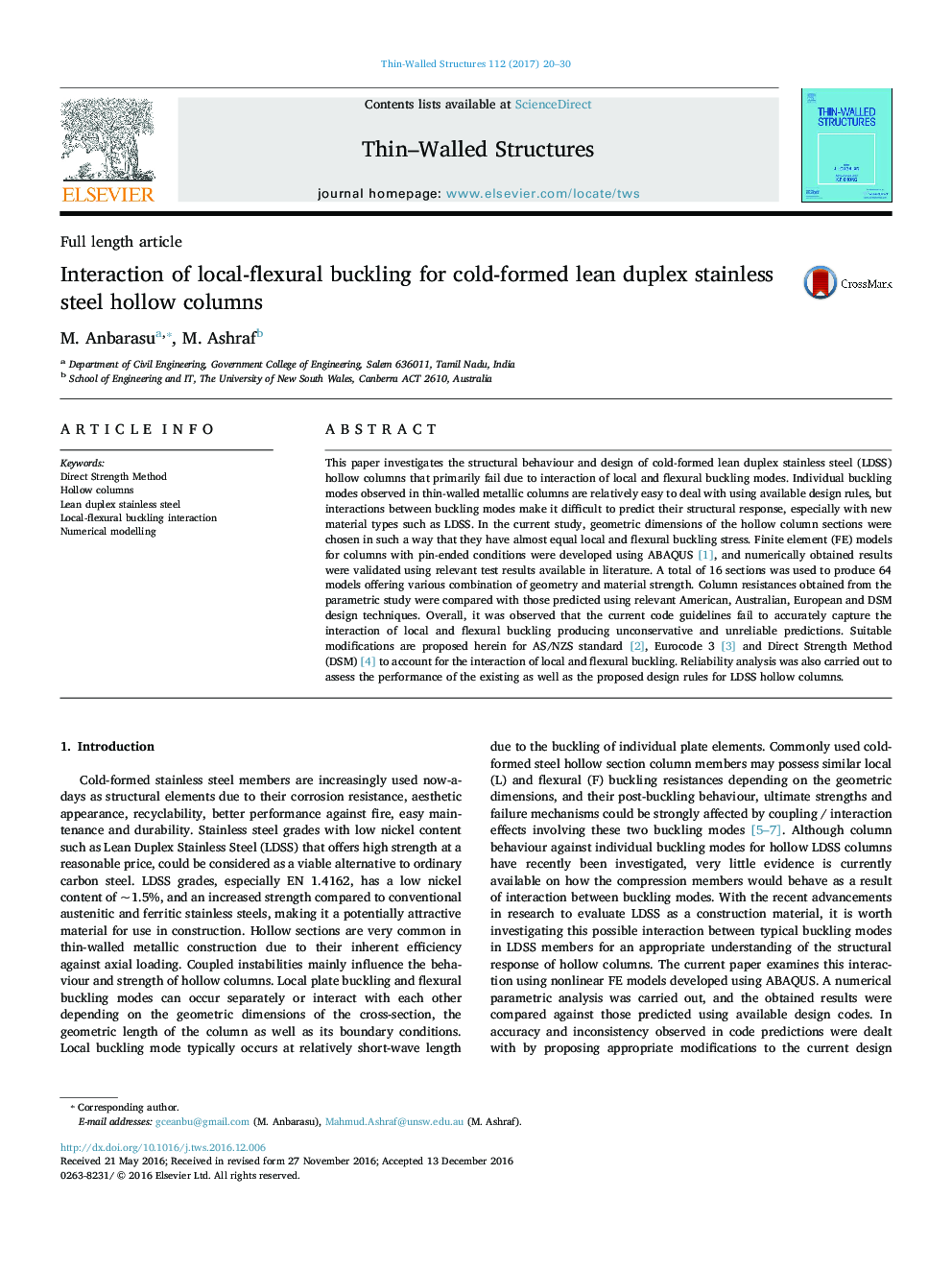| Article ID | Journal | Published Year | Pages | File Type |
|---|---|---|---|---|
| 4928451 | Thin-Walled Structures | 2017 | 11 Pages |
Abstract
This paper investigates the structural behaviour and design of cold-formed lean duplex stainless steel (LDSS) hollow columns that primarily fail due to interaction of local and flexural buckling modes. Individual buckling modes observed in thin-walled metallic columns are relatively easy to deal with using available design rules, but interactions between buckling modes make it difficult to predict their structural response, especially with new material types such as LDSS. In the current study, geometric dimensions of the hollow column sections were chosen in such a way that they have almost equal local and flexural buckling stress. Finite element (FE) models for columns with pin-ended conditions were developed using ABAQUS [1], and numerically obtained results were validated using relevant test results available in literature. A total of 16 sections was used to produce 64 models offering various combination of geometry and material strength. Column resistances obtained from the parametric study were compared with those predicted using relevant American, Australian, European and DSM design techniques. Overall, it was observed that the current code guidelines fail to accurately capture the interaction of local and flexural buckling producing unconservative and unreliable predictions. Suitable modifications are proposed herein for AS/NZS standard [2], Eurocode 3 [3] and Direct Strength Method (DSM) [4] to account for the interaction of local and flexural buckling. Reliability analysis was also carried out to assess the performance of the existing as well as the proposed design rules for LDSS hollow columns.
Related Topics
Physical Sciences and Engineering
Engineering
Civil and Structural Engineering
Authors
M. Anbarasu, M. Ashraf,
